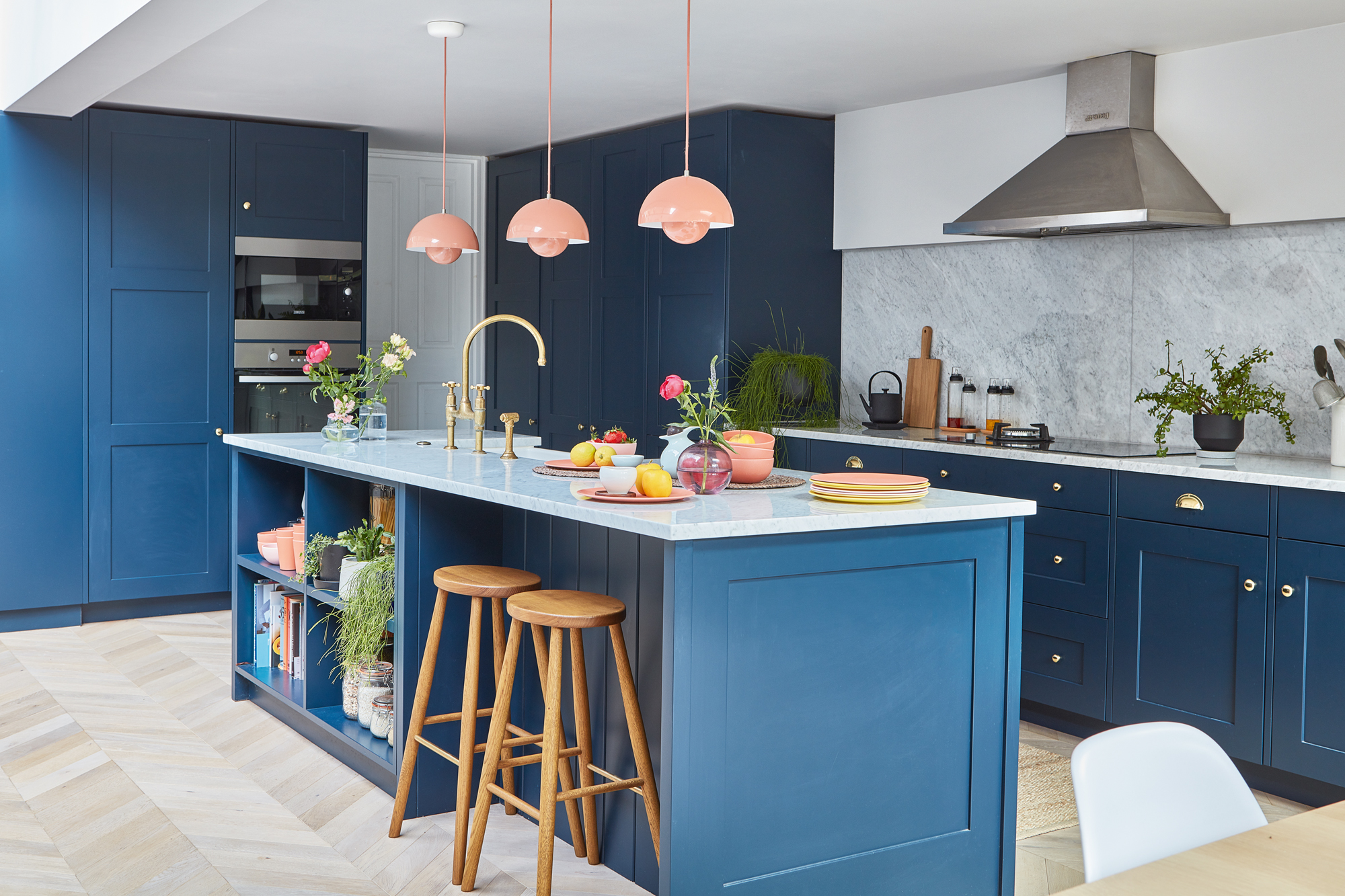

Your kitchen is the heart of your home. But it’s hard to feel that heart beating with a dated design and worn-out fixtures. Whether it needs a complete overhaul or a simple facelift, bringing your kitchen remodeling ideas to life requires perfect planning to stay within budget for both time and money.
According to Remodeling magazine’s 2021 cost vs. value report, a kitchen remodel costs between $26,214 for minor changes to $149,079 for a major renovation with luxury fixtures. Jason Bernier, owner of Bernier Building and Remodeling, Inc. in Milford, Connecticut, says that his kitchen remodels start in the $50,000 range.
“If you want to know what a realistic budget is for your area,” says Bernier, “talk to friends and family. Ask people who have been through the experience about what they had done and how much it cost them.”
According to the 2021 U.S. Houzz & Home Study on renovation trends, “investment on major remodels of large kitchens jumped 14 percent” in 2020. Gabby Koontz, certified kitchen designer with Classic Kitchen & Bath in Harrisonburg, Virginia, says the National Kitchen & Bath Association (NKBA) recommends a kitchen remodeling budget of 10-25 percent of the value of the home. Let’s look at a few other factors in more detail.
Zac Houghton, CEO at Loftera, a UK-based leading source of home improvement advice, says 'A good rule of thumb for budget planning is to dedicate between 10-15% of the sale price of your home for remodeling purposes, with an additional 10-15% set aside for unexpected costs. By sticking to this guideline, you should be able to stay within budget without having to cut corners on materials or labor costs.'
Cleveland-based Interior Designer Colleen Primm shares her thoughts on cutting down kitchen remodels:
- 'If your cabinets are in good shapes and you don’t want to replace them, you can just have new faces put on. Instant update.'
- For around $100 put a garbage disposal button on your countertop. Much prettier than a switch on the wall.
Factors that impact the cost of a kitchen remodel
Size—Obviously, the larger your kitchen, the more it will cost to remodel it, while small kitchen ideas will run you less. According to the online home services marketplace, HomeAdvisor, the cost for a kitchen remodel is from $75 to $250 per square foot.
Moving things around—If you want to open up a closed kitchen by knocking out a wall or two expect to pay more for your kitchen remodel. “Clients have that aha moment when it comes to knocking down walls,” says Koontz. “They’re all worried about whether the wall is load-bearing without considering they’ll leave a hole in their hardwood floors and ceiling. There’s a snowball effect.”
Cabinetry and hardware—Cabinets come in a wide range of quality and cost. And, according to the NKBA, new cabinets could require as much as 35 percent of your budget. Cabinet styles and costs break down like this.
- Stock cabinets are your most affordable option. They’re mass-produced to standard sizes and usually have few options to choose from.
- Semi-custom cabinets are a compromise between stock and custom cabinets. They’re still limited to industry-standard sizes and shapes but allow for custom colors and finishes.
- Custom cabinets are made to order in the sizes and styles you need, with the materials and finishes you desire. They are the most expensive option.
Features and materials—The Houzz report says that smart home tech purchases continue to rise in popularity, particularly for media, security, and lighting devices. Smart tech in your kitchen is nice to have but drives up the overall price. For instance, a faucet that operates on voice command could cost double that of one that doesn’t. Other materials that deserve their own line in your kitchen remodel budget include:
- Countertops
- Appliances
- Lighting/Electrical
- Flooring
- Wallcovering
- Plumbing
Other factors to consider
A few behind-the-scenes items that impact the cost of a kitchen remodel include:
- Permits—Typically, your building contractor will pull the permits and include the cost in his bid. DIY-ers should consult with their local building official before beginning any project to learn the required steps for permitting, inspections, and the costs involved.
- Repairs—Sometimes scary stuff lurks in the walls of an old home, like wiring not done to code. If you discover something needing to be upgraded, the cost will increase the overall budget.
- Change requests—Once construction begins, it’s no time to be indecisive. Changing your mind gets expensive. Have all your options and plans finalized during the design phase to avoid the additional cost change requests bring to the table.
- Disposals—Many municipalities charge for the disposal of construction waste. If you’re doing the job yourself, add this amount to your budget. Contractors typically include this charge in their estimate.
Creating a budget for your kitchen remodel
If you’re working with a certified kitchen designer, they have access to the NKBA’s budgeting calculator, according to Koontz, which makes creating a realistic budget for your remodel job much easier. Either way, you want to ask yourself what your dream kitchen looks like. Do you want an open plan kitchen, a pantry, or smart appliances? Will you need to tear down walls, move plumbing lines, or bump out an exterior wall?
HomeAdvisor breaks down the costs of typical kitchen elements like cabinets, countertops, and flooring. For example, stock kitchen cabinets run from $75 to $150 per linear foot, whereas custom cabinets run from $500 to $1500 per linear foot. This information can give you an idea of costs before you can consult with a local designer.
Your next step is to make what Koontz calls a Top Five List. These are things you absolutely need, like accessibility features, or features you really don’t want to live without, like a wine cooler. “Five is perfect,” she says. “Ten is a little much when it comes to non-negotiables.” After the five “must-haves,” make another list of “nice to have.” These lists will help when it comes to budgeting.
Ways to save money on a kitchen remodel
The interesting part about kitchen budgets is that the less you do, the higher your return on investment. A minor kitchen remodel brings a 72 percent ROI compared to 57 to 54 percent for more expensive endeavors.
Do it yourself—Find a contractor who will work with you to do some of the DIY-friendly tasks like painting.
Choose alternative materials—If a natural stone countertop is on your Top Five List, but you can’t afford marble, Koontz says that granite has “dramatically dropped in price.” To save money, be open to alternatives.
Upcycle fixtures—If you already have a vintage cabinet, protect it with a marine-grade finish and top with a butcher block countertop for an upcycled island. This may not save you money if you have to pay antique value for the cabinet.
Refinish the cabinets—If your cabinets are in good shape, paint them (try our pick of the best paint for kitchen cabinets) and add new hardware to eliminate the cost of installing new ones.
Choosing your kitchen remodeling team
Remodeling your kitchen should be a rewarding experience. In fact, the National Association of the Remodeling Industry’s (NARI) 2019 Remodeling Impact Report gives a kitchen renovation a Joy Score of 10, the highest score available, with 95 percent of homeowners having an increased sense of enjoyment when they’re at home.
A large factor in that joy comes from the remodeling experience. “Every time a client says, ‘That went really, really well,’ there was a professional team on the job,” says Koontz. Partnering with a contractor and a designer helps make all your choices easier. Because they’re already familiar with available materials and fixtures, they can suggest the best options for your project and your budget.
A kitchen designer’s fee may seem like a big chunk in the budget at the outset and many homeowners want to skip this expense. But they will save you money in the long run. “Especially,” says Koontz, “if you’re doing it yourself.” Kitchen designers also know the best contractors to recommend in your area.
If you choose to not use a certified kitchen designer, and friends or coworkers don’t have any builder recommendations, check reputable sites like HomeAdvisor, Angie’s List, or our Find a Builder Guide.
Join our newsletter
Get small space home decor ideas, celeb inspiration, DIY tips and more, straight to your inbox!
Carol J. Alexander writes website copy, blog posts, and feature articles on home remodeling and construction topics from her home in the Shenandoah Valley of Virginia. In addition to Real Homes, notable clients include, This Old House, Family Handyman, and Florida Roofing magazine.
-
 Amazon's bestselling Keurig K-Mini Coffee Maker sale is on now with 40% off — here's why 97,000 customers love it
Amazon's bestselling Keurig K-Mini Coffee Maker sale is on now with 40% off — here's why 97,000 customers love itAmazon's bestselling Keurig K-Mini Coffee Maker sale is on now and offers 40% off. Here's why we and thousands of customers love it. Plus, some alternatives
By Punteha van Terheyden
-
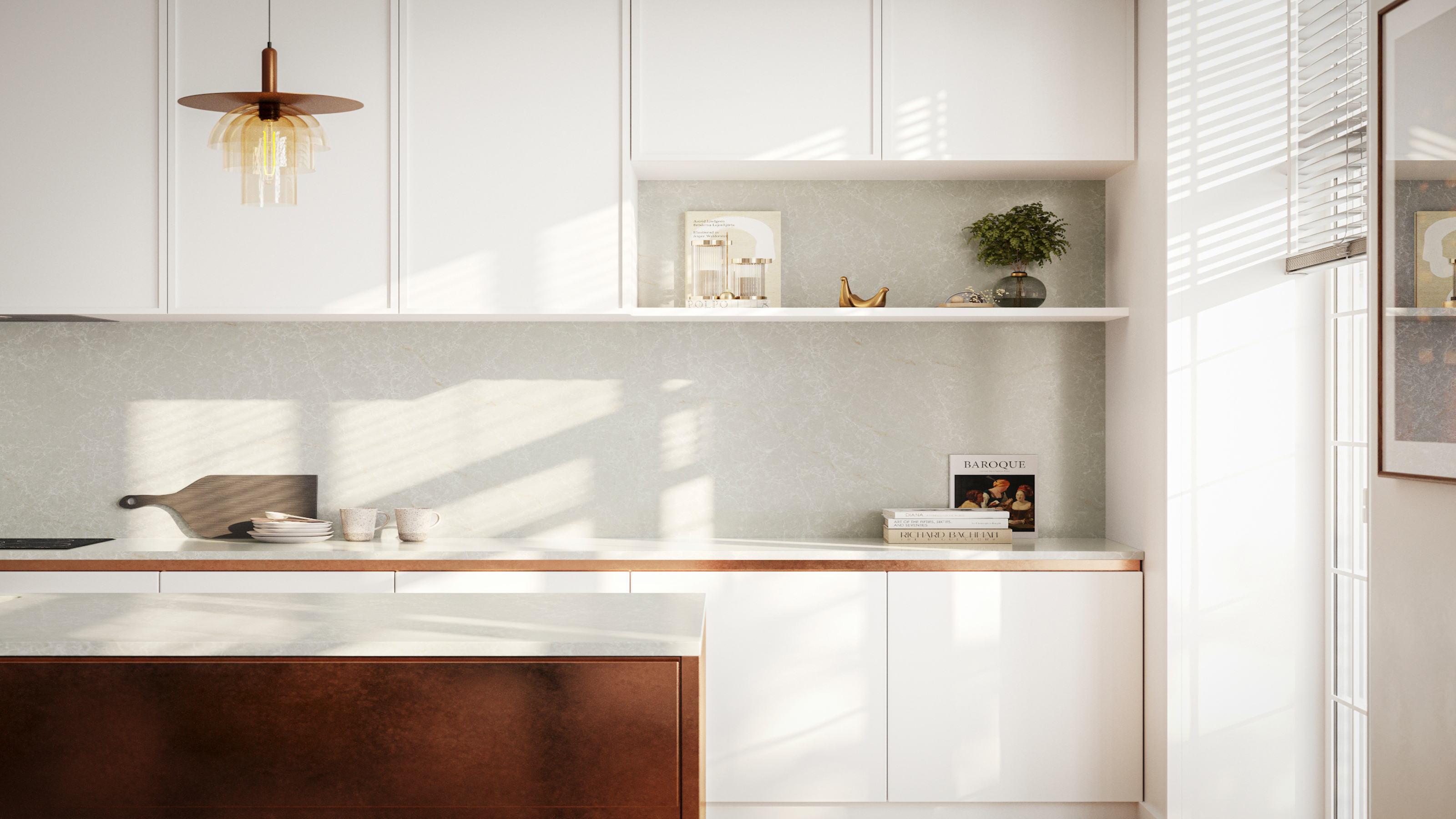 Pros reveal the 10 kitchen cabinet design mistakes to avoid, and what to do instead
Pros reveal the 10 kitchen cabinet design mistakes to avoid, and what to do insteadThe 10 common kitchen cabinet design mistakes when choosing and installing kitchen cabinets. Solutions to problems and how to avoid the issues.
By Isabella Charlesworth
-
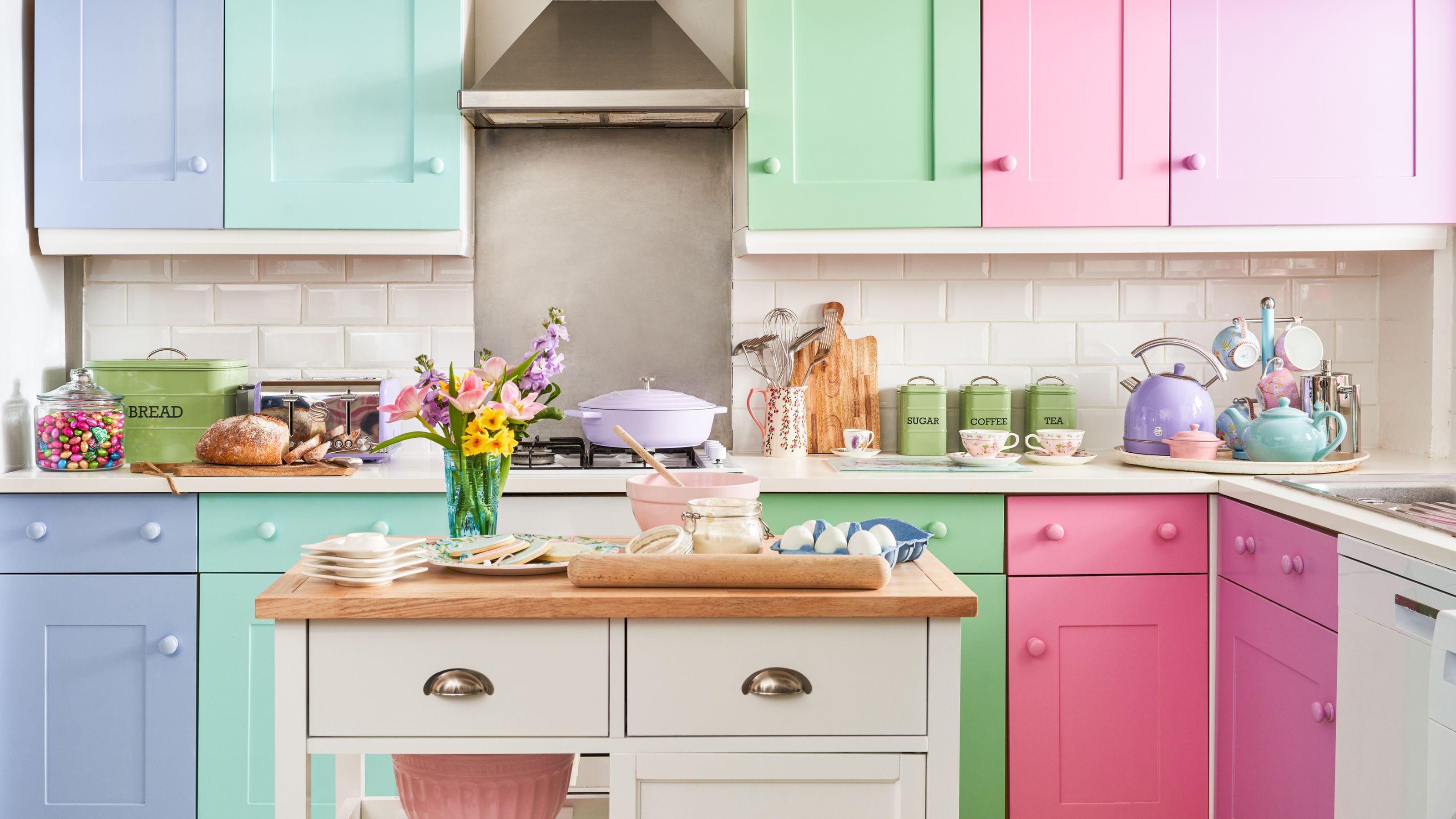 10 pretty pastel kitchen ideas that are utterly dreamy and delicious
10 pretty pastel kitchen ideas that are utterly dreamy and deliciousIce cream sweet pastel kitchen ideas are perfect for adding playfulness. We've asked designers for their favorite ways to bring these in light shades
By Eve Smallman
-
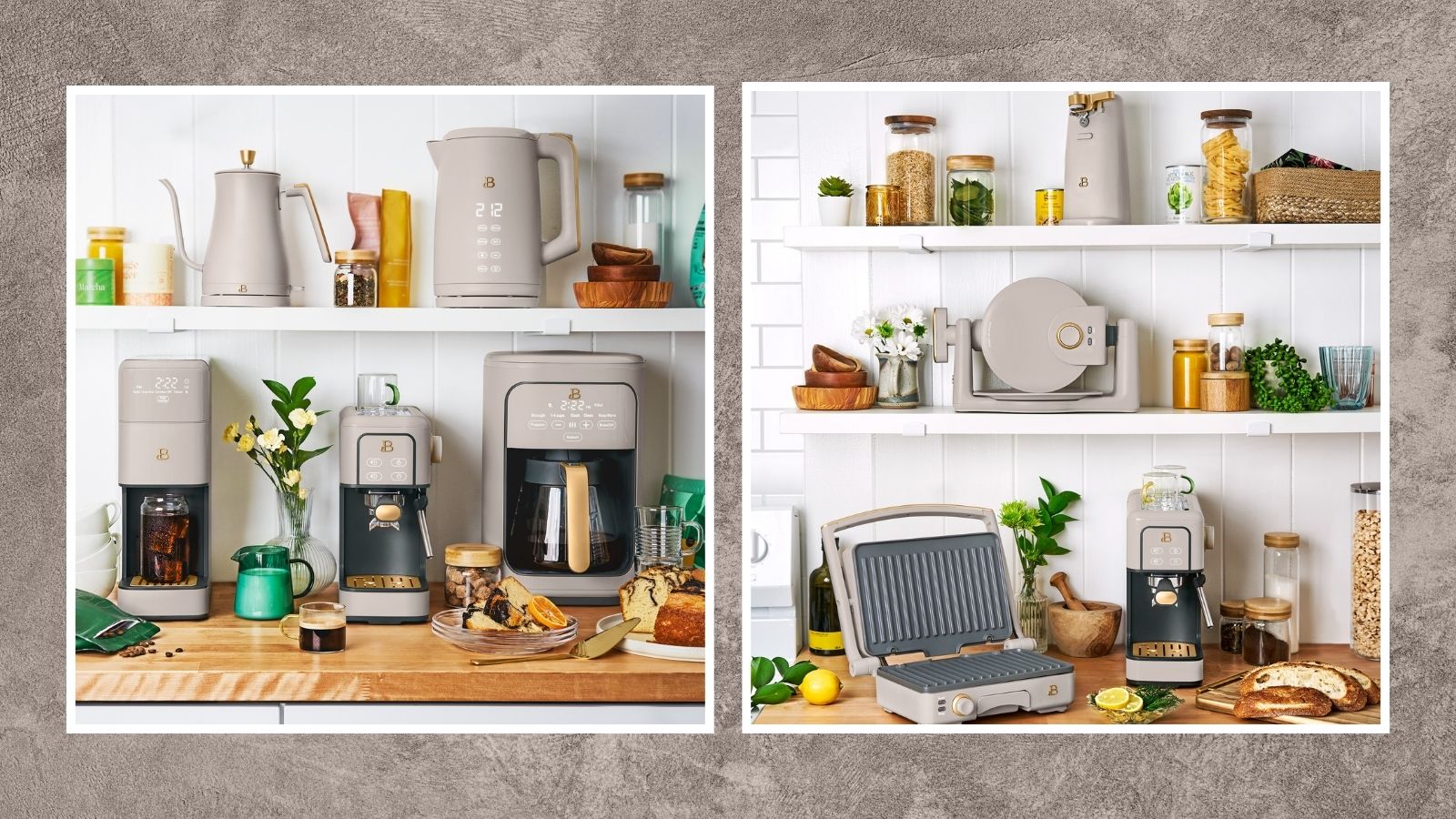 New Beautiful by Drew Barrymore kitchen appliances just dropped, and they'll take your brunch game to new levels
New Beautiful by Drew Barrymore kitchen appliances just dropped, and they'll take your brunch game to new levelsNew Beautiful by Drew Barrymore kitchen appliances just dropped — learn all about the waffle maker, espresso maker, electric can opener, and space-saving kitchen island
By Danielle Valente
-
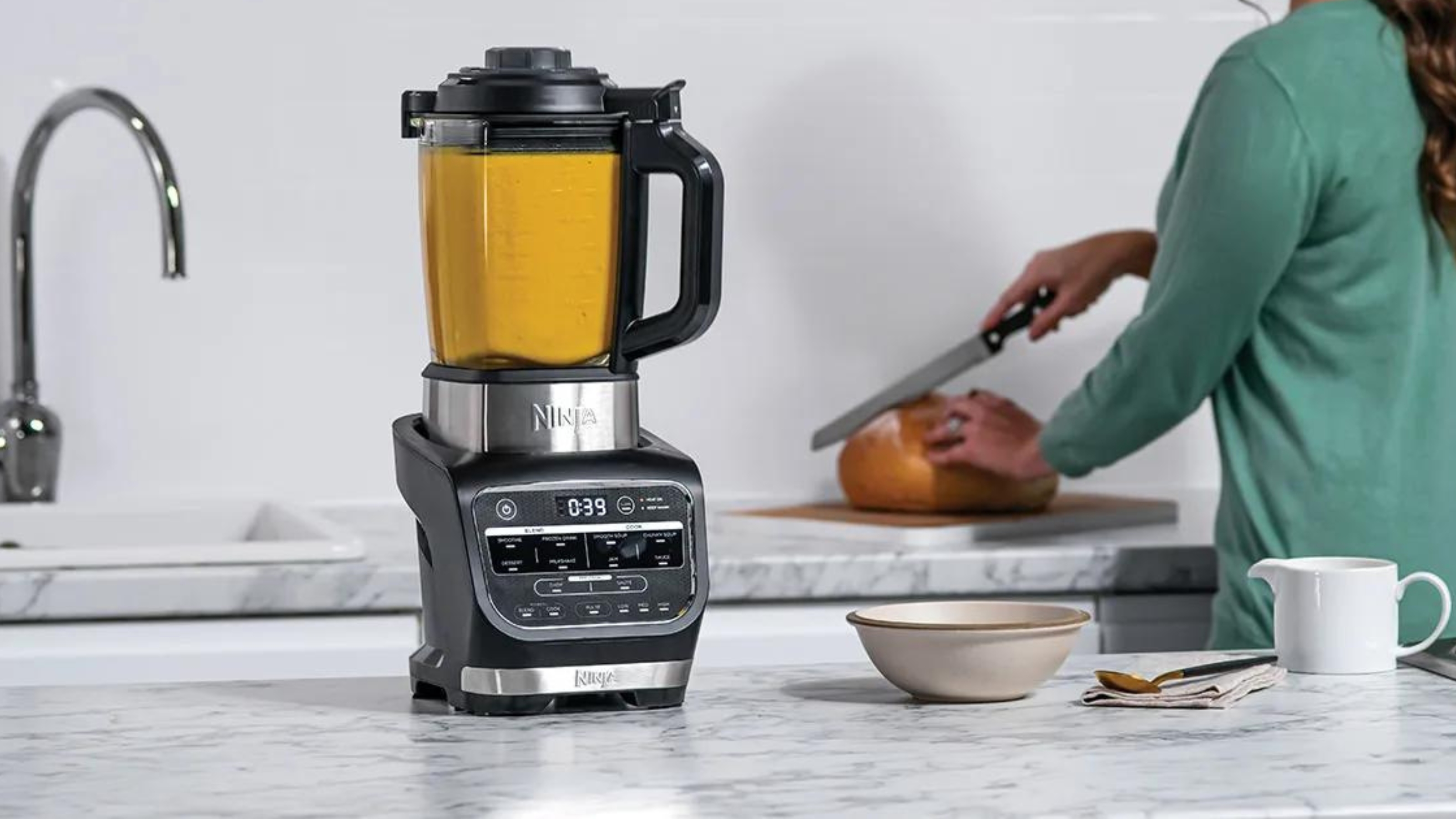
 The Ninja Foodi hot and cold blender has turned my kitchen into a fancy no-waste restaurant
The Ninja Foodi hot and cold blender has turned my kitchen into a fancy no-waste restaurantUsing the Ninja Foodi cold and hot blender, I've made hearty soups from just 65 cents per serving
By Christina Chrysostomou
-
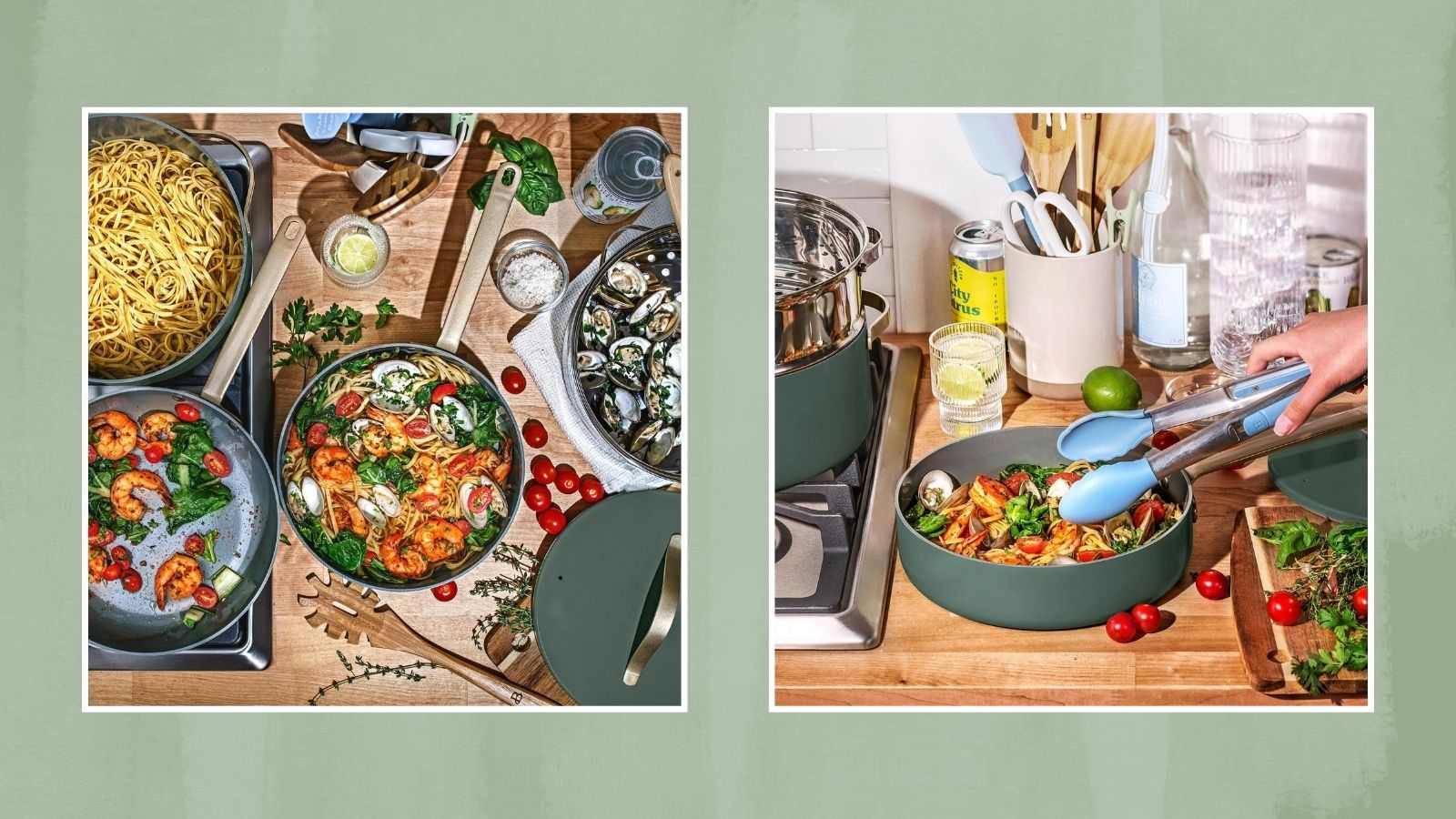 Drew Barrymore drops a new color in her Beautiful kitchen line just in 'thyme' for the holidays
Drew Barrymore drops a new color in her Beautiful kitchen line just in 'thyme' for the holidaysCheck out our edit of the Drew Barrymore cookware set and kitchen appliances in the limited-time "thyme green"
By Danielle Valente
-
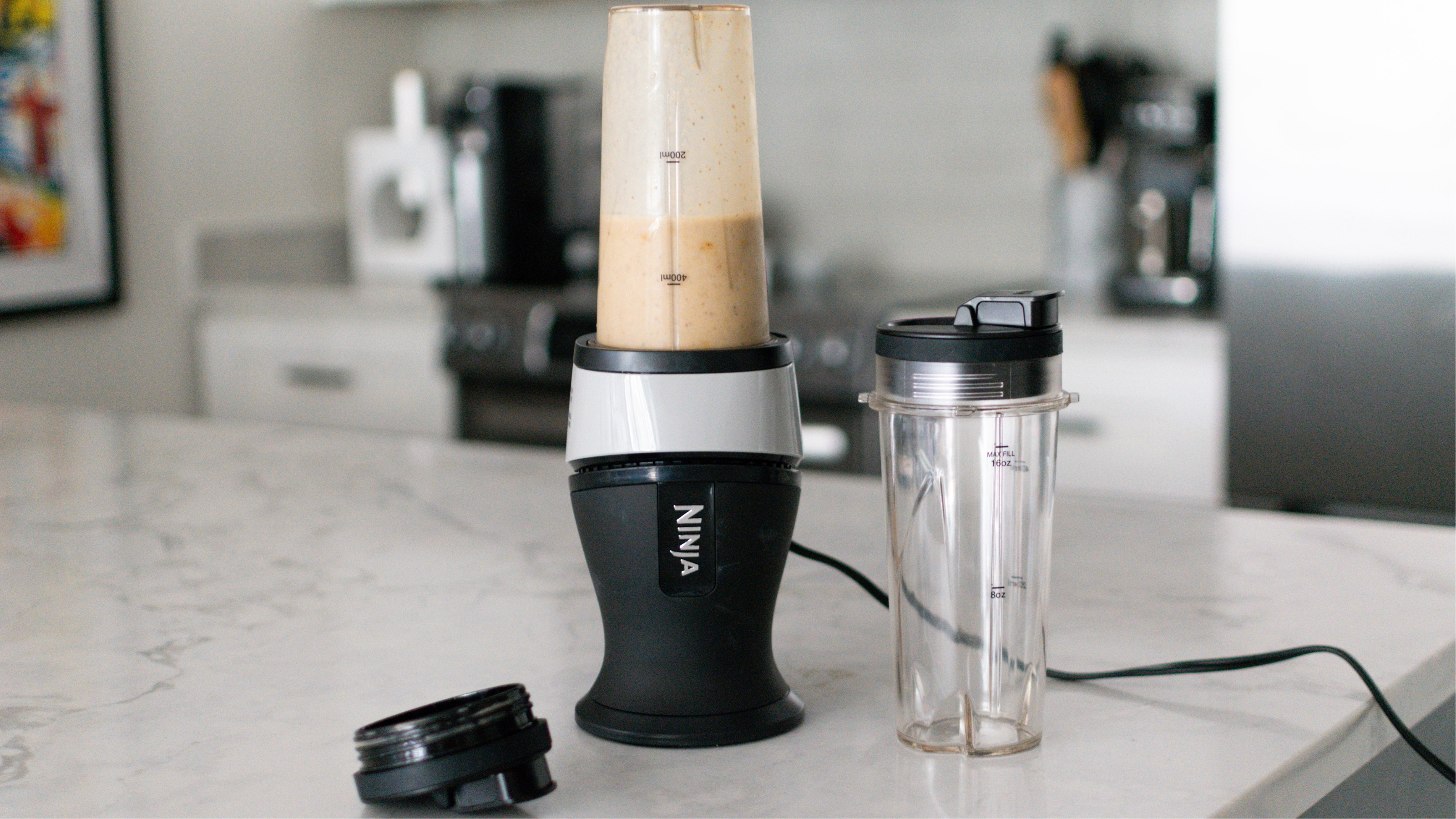
 The Ninja Fit blender is so compact that I no longer dread pulling out this type of appliance
The Ninja Fit blender is so compact that I no longer dread pulling out this type of applianceLearn more about the Ninja Fit blender in our comprehensive review after testing the kitchen gadget for several weeks and understanding all of its pros and cons.
By Heather Bien
-
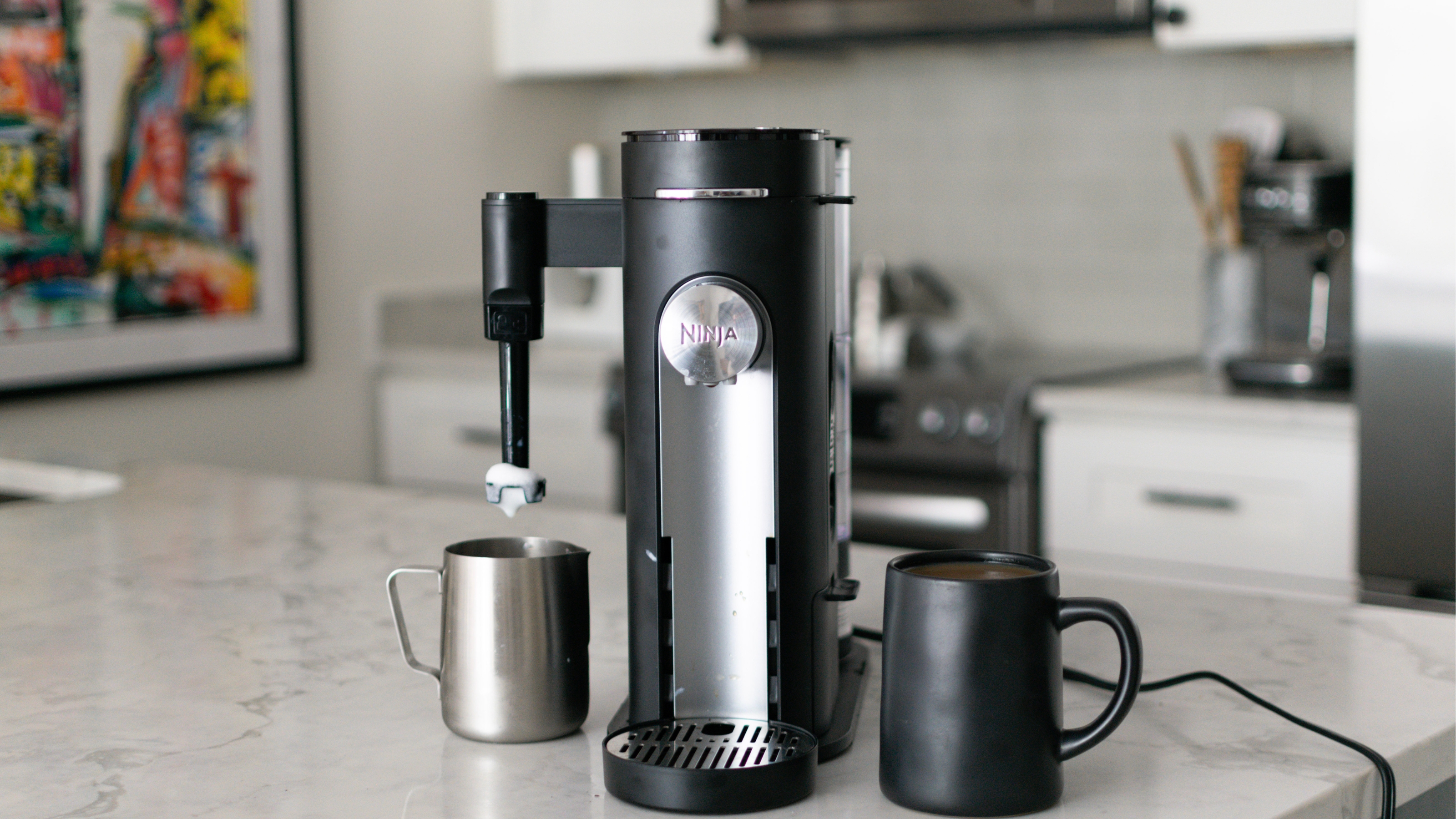
 Review: this Ninja pods and grounds coffee maker has solved our bean debate
Review: this Ninja pods and grounds coffee maker has solved our bean debateThe Ninja pods and grounds coffee maker makes everything from hot black coffee to milky brews with a frothed top and even iced drinks. See what else it's capable of in our review.
By Heather Bien